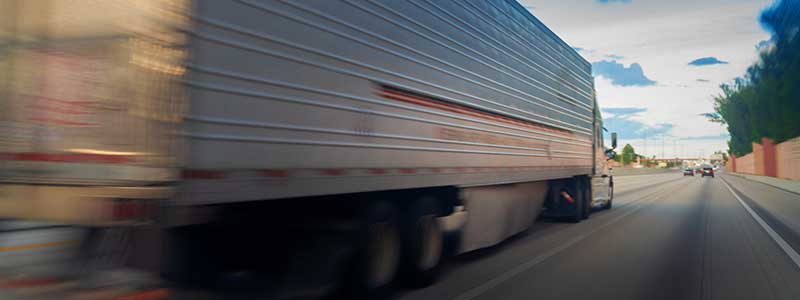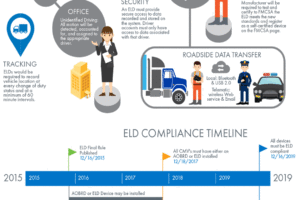The utilization of in-cab cameras in semi-trucks has sparked a debate within the trucking industry. While these cameras undeniably serve as effective tools for enhancing safety, driver training, and exoneration in the event of accidents, some truck drivers have expressed concerns about continuous monitoring and recording.
This article aims to delve into the underlying reasons behind drivers’ reservations concerning in-cab cameras and elucidate strategies to alleviate these apprehensions while accentuating the considerable benefits that drivers can accrue from this technology.
After you review this discussion, consider Zonar’s Coach solution to help train drivers, exonerate them in accident situations, and save money on insurance premiums.
Privacy Concerns and the “Big Brother” Perception
Foremost among the reasons that truck drivers may harbor reservations about in-cab cameras is the notion of an encroachment upon their privacy. Truck driving often entails extended hours on the road, and the cab serves as a driver’s personal sanctuary during these extended periods away from home. The constant surveillance of a camera can give rise to a sensation of being scrutinized by a “Big Brother” figure, instilling discomfort and resistance.
To assuage these privacy concerns, companies can implement policies that safeguard drivers’ privacy while still capitalizing on the advantages of in-cab cameras. For instance, cameras can be programmed to record video footage solely in response to specific events, such as sudden braking or lane departures, rather than continuously. Moreover, clear guidelines can be established delineating who can access the footage and under what circumstances. Transparency in communicating these policies to drivers is of paramount importance.
Fear of Job Loss and Performance Pressure
Another pivotal concern for truck drivers pertains to the apprehension that constant monitoring via in-cab cameras might lead to potential job loss or the imposition of heightened performance pressure. Drivers may fear that any errors captured on camera could culminate in termination or disciplinary measures, even if such incidents are infrequent or minor in nature.
To mitigate these fears, companies should emphasize that in-cab cameras are designed primarily to enhance safety and provide invaluable feedback for driver training. The objective is not to penalize drivers for every lapse but rather to facilitate growth and improvement.
Cultivating a supportive and empathetic environment within trucking companies can engender drivers’ perception of cameras as instruments of progress rather than sources of stress and job insecurity.
Concerns About Data Security and Misuse
Amidst the backdrop of mounting data breaches and cyber-attacks, some truck drivers may harbor apprehensions regarding the security of the footage recorded by in-cab cameras. The concern stems from the possibility of unauthorized access to video data, potentially leading to misuse or privacy violations.
Addressing data security concerns requires the implementation of robust protective measures to safeguard the video footage accumulated by in-cab cameras. These measures may encompass encryption, secure storage solutions, and stringent access controls. Trucking companies can allay drivers’ concerns by effectively communicating these security measures and demonstrating unwavering commitment to data security.
One of the compelling arguments in favor of in-cab cameras within the trucking industry is their remarkable ability to exonerate drivers from allegations of causing accidents. Beyond this pivotal safety benefit, in-cab cameras can also lead to substantial savings in insurance premiums, making them an invaluable asset for both drivers and fleet managers.
Exoneration through Video Footage
The upside of using cameras is undeniable, and the driver is arguably the one who benefits the most.
In the event of a vehicular accident, determining fault and assigning liability can be a complex and contentious process. This often involves conflicting accounts of the incident from various parties, leading to protracted legal battles and potentially damaging consequences for drivers’ records and careers.
In-cab cameras serve as unbiased eyewitnesses to the events transpiring on the road. They capture a comprehensive record of incidents, including factors leading up to and during an accident. This video evidence can be instrumental in exonerating drivers who are wrongfully accused of causing accidents. It provides an indisputable account of the sequence of events and can help establish the true cause of the incident, absolving drivers of undue blame.
By safeguarding drivers against unjust accusations and legal ramifications, in-cab cameras offer peace of mind and protection, ensuring that drivers’ records remain unblemished and their livelihoods intact.
Savings in Insurance Premiums
Beyond the immediate safety benefits, in-cab cameras also contribute to long-term financial advantages. Insurance premiums constitute a substantial operational expense for the trucking industry, and they are often influenced by accident history and risk assessment. Here’s where in-cab cameras can lead to significant savings.
By consistently exonerating drivers and showcasing their commitment to safe driving practices, in-cab cameras can lead to favorable outcomes during insurance claim assessments. When insurance companies witness a proactive approach to safety and the availability of compelling video evidence, they are more likely to view the fleet as a lower-risk entity. This, in turn, can translate into reduced insurance premiums, yielding substantial financial relief for both drivers and fleet managers.
Moreover, the positive impact on insurance premiums extends beyond cost savings. It enhances the overall financial stability and sustainability of the fleet, making it more attractive to insurers and fostering a mutually beneficial relationship.
Communication, Communication, Communication
Resolving truck drivers’ concerns regarding in-cab cameras revolves around nurturing trust and maintaining open lines of communication. Trucking companies must actively listen to drivers’ apprehensions, furnish lucid explanations of the advantages and purpose of in-cab cameras, and demonstrate a steadfast commitment to safeguarding drivers’ privacy and job security. To foster trust and open communication, trucking companies should:
- Involve drivers in the decision-making process when implementing in-cab camera systems.
- Provide comprehensive training and education on the use of in-cab cameras and their benefits.
- Regularly update drivers on any alterations to camera policies or technology.
- Encourage drivers to voice their feedback and concerns and be responsive to their input.
- By prioritizing these considerations and elucidating the substantial benefits that in-cab cameras can offer, the trucking industry can pave the way for greater acceptance and integration of this technology while preserving driver comfort and well-being.
As the trucking industry continues to evolve, embracing technology that not only enhances safety but also offers tangible financial benefits becomes increasingly essential. In-cab cameras represent a prime example of such technology, safeguarding drivers’ reputations, livelihoods, and financial stability while contributing to safer roads and more resilient fleets.







